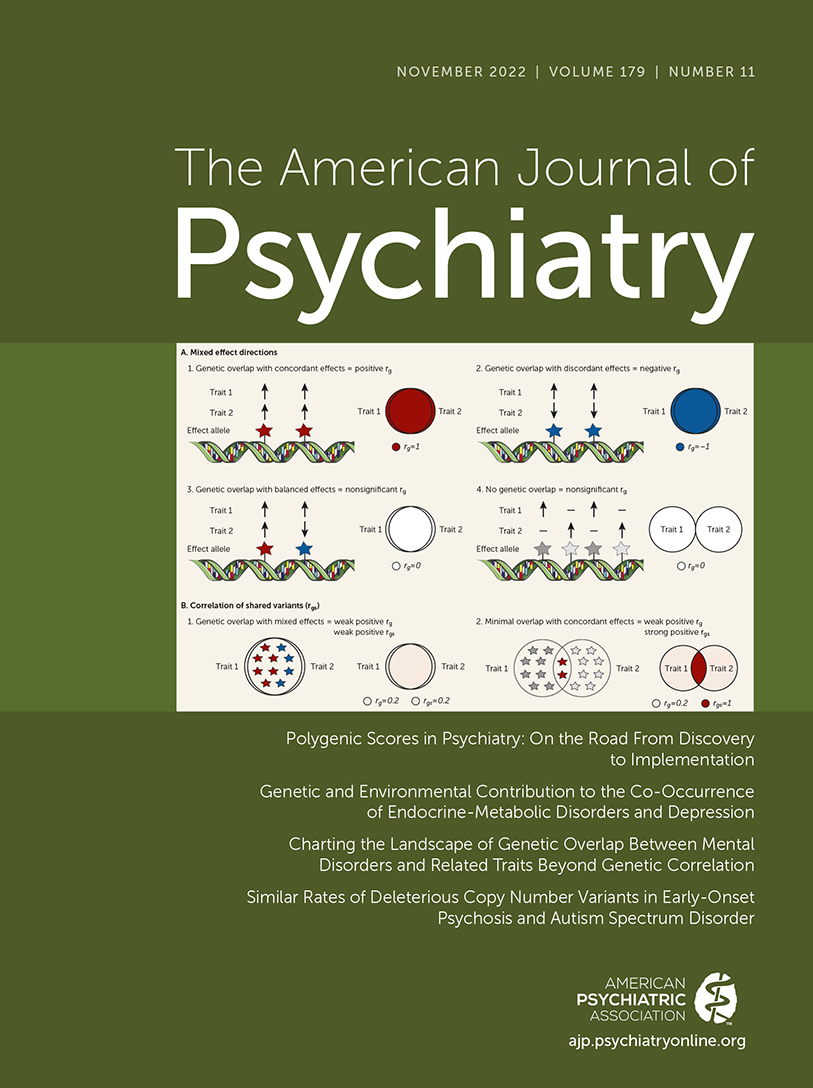Charting the Landscape of Genetic Overlap Between Mental Disorders and Related Traits Beyond Genetic Correlation
Abstract
Objective:
Mental disorders are heritable and polygenic, and genome-wide genetic correlations (rg) have indicated widespread shared genetic risk across multiple disorders and related traits, mirroring their overlapping clinical characteristics. However, rg may underestimate the shared genetic underpinnings of mental disorders and related traits because it does not differentiate mixtures of concordant and discordant genetic effects from an absence of genetic overlap. Using novel statistical genetics tools, the authors aimed to evaluate the genetic overlap between mental disorders and related traits when accounting for mixed effect directions.
Methods:
The authors applied the bivariate causal mixture model (MiXeR) to summary statistics for four mental disorders, four related mental traits, and height from genome-wide association studies (Ns ranged from 53,293 to 766,345). MiXeR estimated the number of “causal” variants for a given trait (“polygenicity”), the number of variants shared between traits, and the genetic correlation of shared variants (rgs). Local rg was investigated using LAVA.
Results:
Among mental disorders, ADHD was the least polygenic (5.6K “causal” variants), followed by bipolar disorder (8.6K), schizophrenia (9.6K), and depression (14.5K). Most variants were shared across mental disorders (4.4K–9.3K) and between mental disorders and related traits (5.2K–12.8K), but with disorder-specific variations in rg and rgs. Overlap with height was small (0.7K–1.1K). MiXeR estimates correlated with LAVA local rg (r=0.88, p<0.001).
Conclusions:
There is extensive genetic overlap across mental disorders and related traits, with mixed effect directions and few disorder-specific variants. This suggests that genetic risk for mental disorders is predominantly differentiated by divergent effect distributions of pleiotropic genetic variants rather than disorder-specific variants. This represents a conceptual advance in our understanding of the landscape of shared genetic architecture across mental disorders, which may inform genetic discovery, biological characterization, nosology, and genetic prediction.



